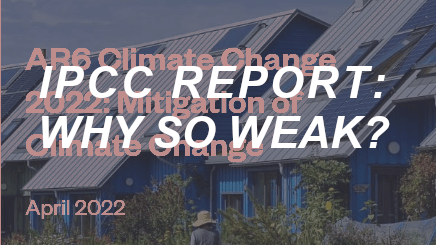The recent IPCC report (the mitigation section of the 6th Assessment Report) has a stark warning. If we don’t start reducing carbon emissions immediately, there no hope of keeping global warming below 1.5°C.
The report is based on the analysis of hundreds of “integrated assessment models” (IAMs), which are “what if” descriptions of the future. The models combine physical science and social science (economics, politics, demographics etc.) that result in greenhouse gas emissions over the next 80 or so years. These emissions are then used to predict future average global temperatures.
Emission pathways
Each of these models is associated with an emissions “pathway”, which gives the sources, types, levels and timing of emissions from power generation, transport, industry, agriculture etc. These pathways each use a series of technical and social assumptions to calculate future carbon emissions. Models were checked to see if its assumptions were technically and socially plausible.
The report highlights 8 representative pathways, each depicting a future for our planet. Only two of these are futures where warming is limited to 1.5°C, and one of them takes the planet up to and terrible 4°C.
Holes in the report
But there are gaping holes in the report. Although the IAMs include social, political and demographic theories, the authors of the report hardly examine the reasons why governments have done so little to reduce emissions. They quote academic literature containing phrases about the inertia of institutions, the influence of the fossil fuels lobby and other reasons for the failure to reverse the upward trend. But these issues, hidden in the detail of the report, are not properly analysed, and are primarily referred to as components of the models.
The other huge hole is the lack of concrete actions that governments and corporations would have to take to produce emissions. What do they need to do that they aren’t doing now? It should be an obvious question, but it is almost entirely avoided.
Bland statements
Instead we have bland statements such as “Different mitigation pathways are associated with different feasibility challenges, though appropriate enabling conditions can reduce these challenges”. Or “Accelerated mitigation alone may run into obstacles. If such obstacles are rooted in underlying structural features of society, then transforming such structures helps remove obstacles.” https://tinyurl.com/cft6npz7
A general failure of the report is its reliance on social, political and economic assumptions based on previous experience and history. It should be clear that what we need now is a clear change from the policies that have brought on the climate emergency.
Reliance on CO2 removal
Another highly questionable aspect of the report is the inclusion of pathways that rely heavily on removal of CO2 from the atmosphere in the place of emission reduction. The report states “Depending on its availability, CCS (carbon capture and storage) could allow fossil fuels to be used longer, reducing stranded assets”. https://tinyurl.com/cft6npz7
If the report is intended to be a guide on how to mitigate global warming, the over-academic language should be replaced by clear options for actions that governments must take to give effect to the 1.5° pathways.
Futile hopes
In the absence of such recommendations, the pathways are no more than futile hopes that fly in the face of scientific, political and economic realities.
The IPCC scientists are constrained by the IPCC’s general mandate. The reports are supposed to be non-prescriptive and policy neutral. But this should not mean that they contain no policy options for effective government action. For example, the mitigation report could indicate two or more specific variants for drastic action, leaving the choice of option open.
Vested interests
A serious problem with the IPCC working group that wrote the report is the vested interests of some members. The authors included oil company officials from Chevron as well as Aramco, the Saudi Arabian state-owned oil and gas company. Measures to prevent conflict of interest are clearly ineffective. https://tinyurl.com/3bv9eybw
The most influential of the IPCC assessment report documents, the Summary for Policymakers, go through a vetting process by government representatives. In the mitigation report, Saudi Arabia, the US and China all intervened to water down parts of the report they were not comfortable with. https://tinyurl.com/yey29bx4
It is time for the IPCC scientists to take a stand – at the very least, they should publish an independent report, free of government censorship. If this insistence on transparency bars them from working for the IPCC, they should refuse to participate in reports that have become a cover for government inaction.


